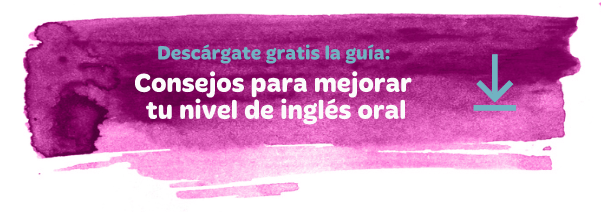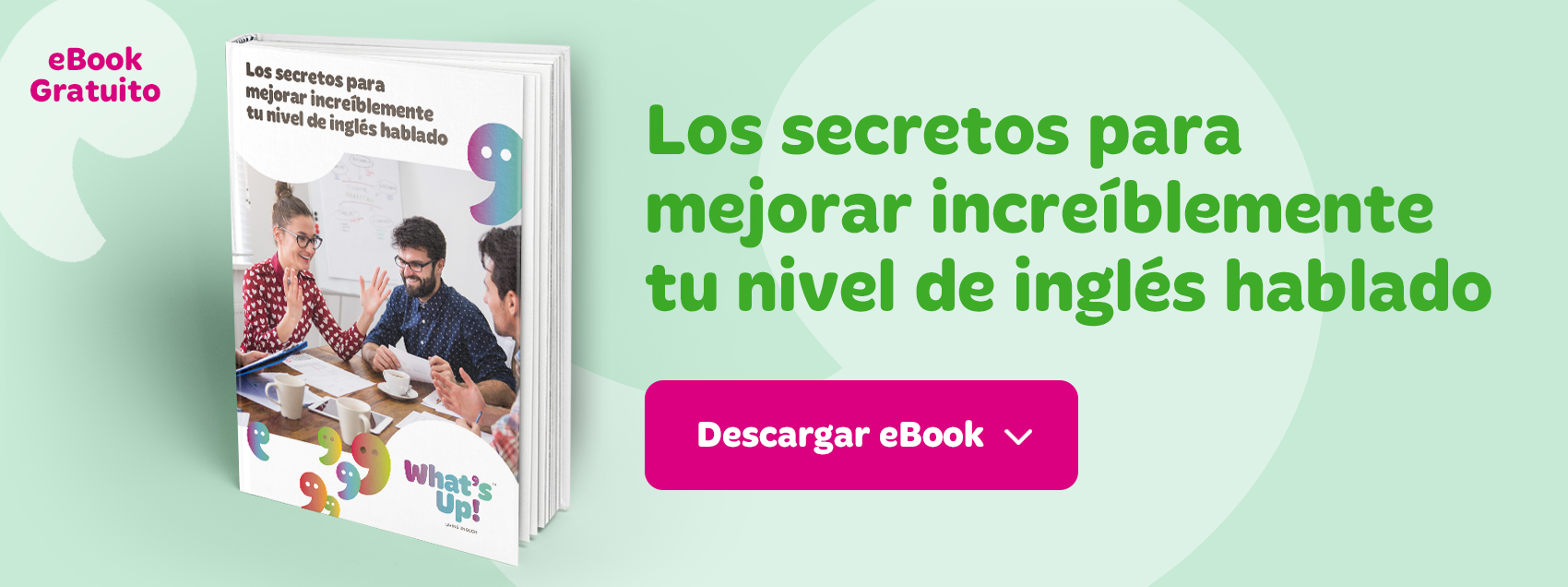What's Up! blog
el mejor contenido del mejor curso de inglés
Diálogo en inglés: practica con este ejercicio para dos personas
La conversación oral es una de las habilidades más difíciles de dominar del inglés: no solo requiere que combines dos de tus skills, sino que por lo general ocurre rápido y sin darte oportunidades para preparar ni consultar un diccionario.
Pero no temas, con práctica todo se consigue. Además de tus clases habituales de inglés, hay actividades que puedes hacer en casa.
Diálogo
Si tienes con quién practicar, puedes probar con este ejercicio para dos personas. Memoriza este diálogo entre cliente y recepcionista de hotel y después repítelo sin mirar. Puedes practicarlo unas cuantas veces leyéndolo antes de pasar a hacerlo sin apoyo visual:
Receptionist: Good morning. This is the Salt Flats Hotel, how may I help you?
Customer: Good morning. I would like to make a reservation for the last weekend in July.
R: I’m afraid we have very few vacancies for that particular weekend. How many people is the reservation for?
C: Two adults.
R: There is a double room available on the 29th of July, would that suit you?
C: Yes, thank you very much.
R: How long will you be staying?
C: We’ll be staying for two nights.
R: Excellent. What name will the reservation be listed under?
C: Paris Miller.
R: Thank you very much for your reservation. We look forward to seeing you in July.
C: Thank you! Have a nice day.
Para seguir practicando
Modifica el diálogo todo lo que necesites para adaptarlo a lo que necesites aprender. ¿Te resulta demasiado corto o fácil? Puedes ampliarlo añadiendo tus propias ideas. Aquí tienes unas cuantas sugerencias de detalles que puedes preguntar para seguir con el diálogo:
-
Pedir aclaraciones: la persona que haga de recepcionista puede no entender o necesitar que se especifique algún dato, como la forma de escribir el apellido:
R: What name will the reservation be listed under?
C: Paris Miller.
R: Could you spell your last name for me, please?
C: Sure. M-I-L-L-E-R.
-
Confirmación: es muy habitual que, al hacer una reserva, la persona que toma los datos los repita todos juntos al final para confirmar:
R: All right, your reservation has been made for the 29th of July for a double room for two people, is that right?
C: Yes, that’s right, thank you very much. -
Datos: el recepcionista puede necesitar datos como el teléfono, dirección o correo electrónico del cliente:
R: Is there a phone number where you can be contacted?
C: Yes, my mobile phone number is 600 000 000.
R: We will need an email address to send you the details of your reservation.
C: Sure. It’s myname@email.com -
Preferencias: el recepcionista puede ofrecer distintas opciones de habitaciones, como distintas disposiciones de camas, vistas o servicios incluidos:
R: Would you prefer a double bed or two singles?
C: A double bed, please.
R: We have several rooms with an ocean view and others which face the garden. Which one would you prefer?
C: The one with an ocean view, please.
Ahora te toca a ti. Prepara tu diálogo, apréndetelo y ¡lánzate a practicar!
Improvisa
¿Tienes dominado ya el diálogo del hotel? Vamos a dar un paso más con el siguiente diálogo, una conversación en un restaurante. Pero esta vez, vas a tener que improvisar: elimina las partes subrayadas y sustitúyelas por otras palabras, las que tú quieras. Cada participante tendrá que adaptarse a lo que oiga para seguir la conversación, así que el diálogo que te proponemos a continuación solo servirá de guía general. ¿Te atreves con ello?
Waiter: Hi! Are you ready to order?
Customer: Well… sort of, I have a few questions. Which of these dishes are vegetarian?
W: All the dishes under “Vegetables” are vegetarian, as well as some the appetizers.
C: Oh, excellent, thank you. Does the vegetable roast have any onion in it?
W: Yes, but we can leave it out if you wish.
C: I’ll have one of those then. No onion, please.
W: Vegetable roast, no onions. All right, would you like anything to drink?
C: Do you have any fruit juices?
W: We have bottled orange, pineapple, apple and grape juice.
C: I’ll have the pineapple juice.
W: Would you like some ice in it?
C: Yes, please.
W: Is there anything else you would like?
C: Well… you mentioned the appetizers. Is there anything you would recommend?
W: The salads are all perfect for this weather. You might want to try our Special Salad.
C: I’m not much into salads, actually… I think I’ll have the spicy apple dip.
W: I’m afraid we’ve run out of that one… may I suggest the mini spring rolls instead?
C: Sure.
W: Wonderful. Anything else?
C: That’s it for now, thank you very much.
Prueba con variaciones de este ejercicio. Cuando lo puedas ensayar con comodidad y sin tener el texto delante, prueba a hacer diálogos en otros contextos. Llamar a atención al cliente para solucionar un problema con el ordenador, una conversación con el personal de una tienda o lo que se te ocurra. Las posibilidades son infinitas, así que ponle imaginación y ¡a por ello!
Posts relacionados:



